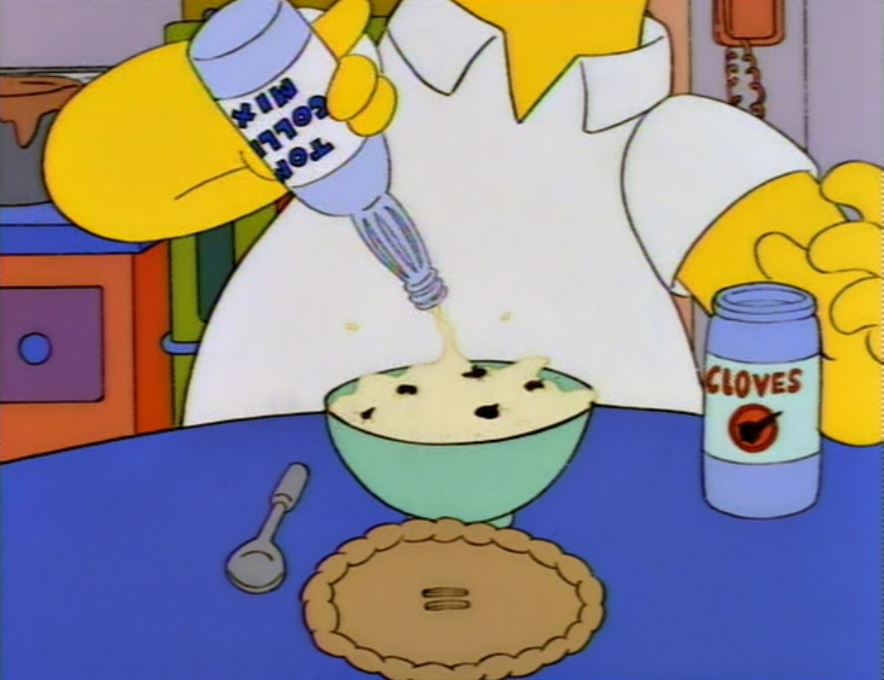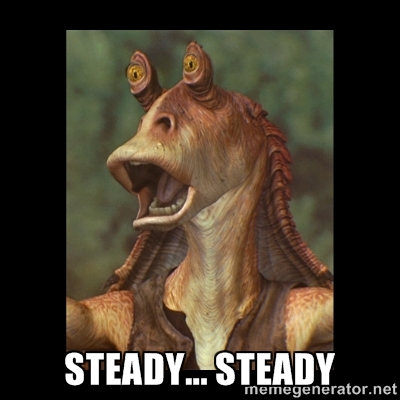Have you ever gotten six or ten or eighteen picks into a draft and had no idea whether you were drafting the right colors? Do you sometime struggle to decide if you want to stick with your powerful early picks after the complementary cards have dried up? Are you sick of reading insightful advice like “a good deep deck is better than a bad deck with a couple bombs” as if that answers your questions? Do you like Spoon?
What does it mean to jump ship, or to change colors, in the middle of a draft? How does this relate to staying open or flexible? What is actually going on while you pick cards for your draft deck? People want shortcuts, answers, resolution, simplicity, closure. Why did I lose all three rounds with the pile I drafted? I committed too early and didn’t read the signals. File that away in the failure box and move on to new ideas!
It’s not so clear cut. Sure, you can view each draft as a singular experience, where your collective decisions were either good or bad, and you won or lost as a result. “First-picked Wilt-Leaf Liege and forced tokens but the cards didn’t come.” That may be an accurate description of things that happened. It might even be helpful to your development as a drafter. But you aren’t going to have consistent success at the draft tables unless you dig deeper and think about what is actually going on. A draft isn’t one decision; it’s forty decisions. Some of them matter more than others, but most of them matter more than you think.
I’ve been saying since day one that drafting is all about having a plan. “You want to know what type of deck you are trying to build as you build it.” The challenge, of course, is that you don’t know what type of deck you are trying to build until you see the cards available to build from. And as the draft progresses you get new information. Your plans change. Sometimes a plan presents itself so obviously that you simply follow the lead of the cards and end with an amazing deck. Other times the cards are so incoherent, the signals so mixed, the power level so low, that you are stuck making a meal out of pie crust, cloves, and Tom Collins mix.
Given the randomness of drafting, you should prepare for the unexpected. The best way to do that is to pick cards that are powerful and flexible. This allows you to have many possible plans, and to tailor your choices to building an effective plan as the draft progresses. Being able to evaluate how marginal cards can further a specific plan becomes crucial to maximizing the stay open strategy. If you know that you can fill out your green curve with a twelfth pick [casthaven]Gnarlid Pack[/casthaven] or [casthaven]Sylvan Bounty[/casthaven], it frees you to take powerful and versatile cards early without having to commit to playing all of them just to build a playable deck. This is why it is important, in draft formats combining different sets, to know what curve fillers and mediocre cards are available in the set that gets drafted pack three. You have to know what you can plan for. It’s playing to your outs.
You often hear “stay open” or “don’t commit” but what that really means is “take cards that combine well with the widest range of other cards.” So does that mean pick colorless cards whenever possible? Not exactly. There are three semi-related factors at play: power, versatility, and color commitment. [casthaven]Phyrexian Obliterator[/casthaven] is about as powerful as it gets in limited, but it has zero versatility. If you pick one in a Scars of Mirrodin block draft, you either play it in mono black or you don’t play it at all. Sometimes it is amazing, but mostly it is useless. What about starting off your Modern masters 2015 draft with [casthaven]Noble Hierarch[/casthaven]? You need to play green to some extent, but the card is very versatile and fits in many decks of almost any combination of colors, while still being very powerful almost any time you play it in a draft game. If you first pick [casthaven]Phyrexian Obliterator[/casthaven], you have to get lucky to play it, or you have to play a total pile of garbage that you convince yourself is justified by the raw power of the black mamba. If you first pick [casthaven]Noble Hierarch[/casthaven], you have a great card that can connect to many other powerful cards.
Plan to have many plans to choose from. You can take that obliterator first, and take the best black card out of each subsequent pack, but then you have committed yourself to only one plan. Even if that plan is the absolute best when it works, it won’t work more than 20% of the time, tops. Combine those probabilities! A 20% chance at an 80% chance to 3-0 a draft is not a good deal. Magic is a game of small margins. You will almost always be better served by accumulating chains of 60% chances than you will by trying to hit the jackpot. The other side of this is what happens when things go wrong. A 20% shot to get an 80% shot is not so bad if the missing on the 20% still leaves you with reasonable chances of winning. First-picking [casthaven]Phyrexian Obliterator[/casthaven] isn’t a bad play if the rest of the pack is weak and you can easily abandon it for an open color combination without costing yourself very much. But if you take obliterator out of a pack that also has [casthaven]Dismember[/casthaven], you are abandoning a card that will 100% go in every deck you draft and make it better, for the long shot at having a sweet mono-black deck.
Ultimately, your goal is to draft in a way that you don’t have to “jump ship” or significantly change colors. After pack one, you should try to have six or more strong cards in one color, and an assortment of strong and flexible cards from other colors that you can mix and match depending on where the draft goes in the subsequent packs. Some formats are more restrictive in how colors get paired, like Gatecrash, and in those situations you may not have as much flexibility. The famous Ben Stark pack two switch was at Pro Tour Gatecrash, after all, where he jumped from Orzhov to Simic in the second pack and correctly assessed that Simic was the best place for him to be. But that is an exception that you can’t bank on too often. Make your first pack of picks versatile enough that you won’t have to abandon them. Narrow but powerful cards, like [casthaven]Phyrexian Obliterator[/casthaven], any card that costs triple mana of a single color, or a card that requires a dedicated deck to play, are the prizes you get in packs two and three, or later in pack one, for being the only person in the archetype. Even if you do open obliterator with [casthaven]Dismember[/casthaven] in pack one of a Scars block draft, your goal should be to take the Obliterator pick nine after the cards go around the table, assuming you have the chance to take a lot of strong black cards. Set yourself up to take advantage of the future opportunities that come.
The truly subtle challenge of drafting comes when you are getting signals that your early archetype is not open, but you don’t see anything else to jump into. I’ve had many drafts where I felt cut off but did not see a better option. Sometimes this happens because packs are weak, or your neighbors are drafting inconsistently, or if the format does not have enough viable archetypes to support all eight drafters. In these situations, your best bet is to assess the quality of cards you see sixth through tenth pick in pack one. If there is an open archetype with good cards available, those picks are when you will see them. If you see strong cards in those late slots in pack one, take that as a signal and seriously consider jumping into that deck.
When you aren’t seeing strong cards late in the pack, you have much less reason to jump ship. When pack one dries up of playable cards after five picks, and you see nothing good in any color, that is a sign the packs are weak, not that someone is cutting your archetype. In that situation, you want to ride it out and hope that you’ll get good cards in pack two as a reward for not passing anything good. My very strong first draft deck from Grand Prix Vegas is a nice example of this. The end result looks good, but I did not get many notable cards in my early picks of any of the three packs. The best cards that came around late, however, were all-stars for my archetype. [casthaven]Selesnya Guildmage[/casthaven] seventh pick pack three? Safe to say nobody else drafted GW tokens. I stuck with my first pick Wilt-Leaf Liege, despite the appearance that I was being cut off, because I didn’t see anything good enough to be worth changing. It turned out the packs were just weak, there wasn’t anyone else drafting GW tokens cards, and they eventually made it to me. If I had jumped ship just because I wasn’t seeing good cards to support my first pick, I would have ended up with a weaker version of the same deck, missing some solid middle-pack cards that I took early out of weak choices.
Usually it is best to stick with your wife. Choose your commitments wisely!
Carrie O’Hara is Editor-in-Chief of Hipsters of the Coast.



